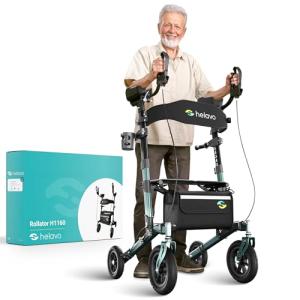The Comprehensive Guide to Indoor Walkers: Benefits, Features, and Recommendations
Indoor walkers, often created for security and ease of usage, are vital help for people with mobility issues, seniors, or anybody recuperating from surgical treatment or injury. These devices offer stability, support, and self-confidence, allowing users to preserve an active lifestyle within the convenience of their homes. This article looks into the various elements of indoor walkers, including their benefits, crucial features, aspects to consider when acquiring one, and a contrast of the top-rated designs offered in the market today.
Benefits of Using an Indoor Walker
Indoor walkers provide a plethora of benefits, from security to health improvement. Here are some of the most considerable advantages:
| Benefit | Description |
|---|---|
| Increased Stability | Provides support to prevent falls, making it much safer to stroll. |
| Improved Mobility | Motivates higher movement throughout the home. |
| Enhanced Confidence | Users feel more secure, minimizing anxiety about moving. |
| Physical Rehabilitation | Aids in the recovery procedure for post-surgery patients. |
| Much better Posture | Promotes appropriate body alignment while walking. |
| Social Interaction | Allows users to engage more with family and visitors. |
| Adjustable Features | Numerous models cater to customized requirements such as height changes. |
Secret Features of Indoor Walkers
When picking an indoor walker, it is important to assess its features to guarantee it satisfies the user's specific needs. Here are some features to consider:
- Adjustable Height: Ensures that the walker fits the user's body size for optimum comfort.
- Foldability: Many walkers can be folded for easy storage and transport, making them convenient for those who may travel.
- Weight Capacity: Check the optimum weight the walker can support to make sure functionality.
- Design Options: Options might consist of conventional walkers, rolling walkers with wheels, or specialized models for added performance.
- Hand Grips: Ergonomic grips assist provide comfort and reduce the threat of slipping.
- Brakes: A reliable braking system is essential for safety when utilizing rolling walkers.
- Additional Accessories: Features like storage baskets or trays can be advantageous for carrying individual products.
Aspects to Consider When Purchasing an Indoor Walker
Selecting the best indoor walker can significantly affect the user's mobility and lifestyle. Here are some factors to remember:

1. User's Condition
- Assess the Mobility Aid For Elderly constraints or healing requirements of the user.
2. Type of Walker
- Identify whether a basic Brake Walker or a rolling walker is better suited based on the user's capability to raise the walker or the need for mobility as they stroll.
3. Home Environment
- Think about the space in the home where the walker will be utilized. Exists enough room to maneuver through entrances and narrow corridors?
4. Individual Preference
- Visual appeals and color can matter as users might feel more comfortable utilizing a walker that they discover visually appealing.
5. Upkeep
- Think about the maintenance and resilience of the walker. Some materials require more maintenance than others.
6. Cost Point
- Indoor walkers can vary significantly in rate. Identify a budget that fulfills both quality and price.
Top Indoor Walkers: A Comparison
The marketplace features numerous indoor walkers developed to accommodate different requirements. Below is a relative table showcasing a few of the best indoor walkers currently readily available.
| Walker Model | Type | Weight Capacity | Adjustable Height | Foldable | Price Range |
|---|---|---|---|---|---|
| Medline Heavy Duty Walker | Standard Walkers | As much as 400 lbs | Yes | Yes | ₤ 50 - ₤ 70 |
| Drive Medical Rollator | Rolling Stylish 4-Wheel Walker | Up to 300 pounds | Yes | Yes | ₤ 70 - ₤ 100 |
| Hugo Mobility Walker | Rolling Walker | Up to 250 pounds | Yes | Yes | ₤ 60 - ₤ 90 |
| Nova Medical Walker | Standard Walkers | Up to 300 lbs | Yes | Yes | ₤ 85 - ₤ 120 |
| Zler Folding Walker | Standard Walkers | Approximately 300 pounds | Yes | Yes | ₤ 40 - ₤ 70 |
Frequently Asked Questions (FAQ)
1. Do indoor walkers have a weight limitation?
Yes, a lot of indoor walkers have actually a defined weight capability. It is vital to select a walker that can support the user's weight for safety.
2. Can a walker be used outdoors?
While indoor walkers can in some cases be utilized outdoors, it's suggested to utilize walkers specifically created for outdoor usage, which might offer better stability and balance on irregular surfaces.

3. How do I figure out the right height for my Safe Walker?
The proper height for a walker is typically waist-high when the user is standing. Users should have the ability to maintain a natural posture while holding the walker.
4. How do I clean and keep my indoor Safe Walker?
Frequently wipe down the walker with a moist fabric and mild detergent. Inspect the brakes, wheels, and any moving parts to guarantee they are operating properly.
5. How can I improve my comfort while utilizing a walker?
Consider utilizing grips with additional cushioning or wearing supportive shoes. It's important to change the height of the walker to prevent pressure on the back and arms.
Indoor walkers work as necessary tools for boosting mobility, safety, and independence for people with mobility challenges. With various models to select from, it is crucial to consider factors such as the user's particular requirements, the home environment, and the walker's features. By selecting the ideal indoor walker, users can improve their quality of life, keep their self-reliance, and continue participating in everyday activities with confidence.

